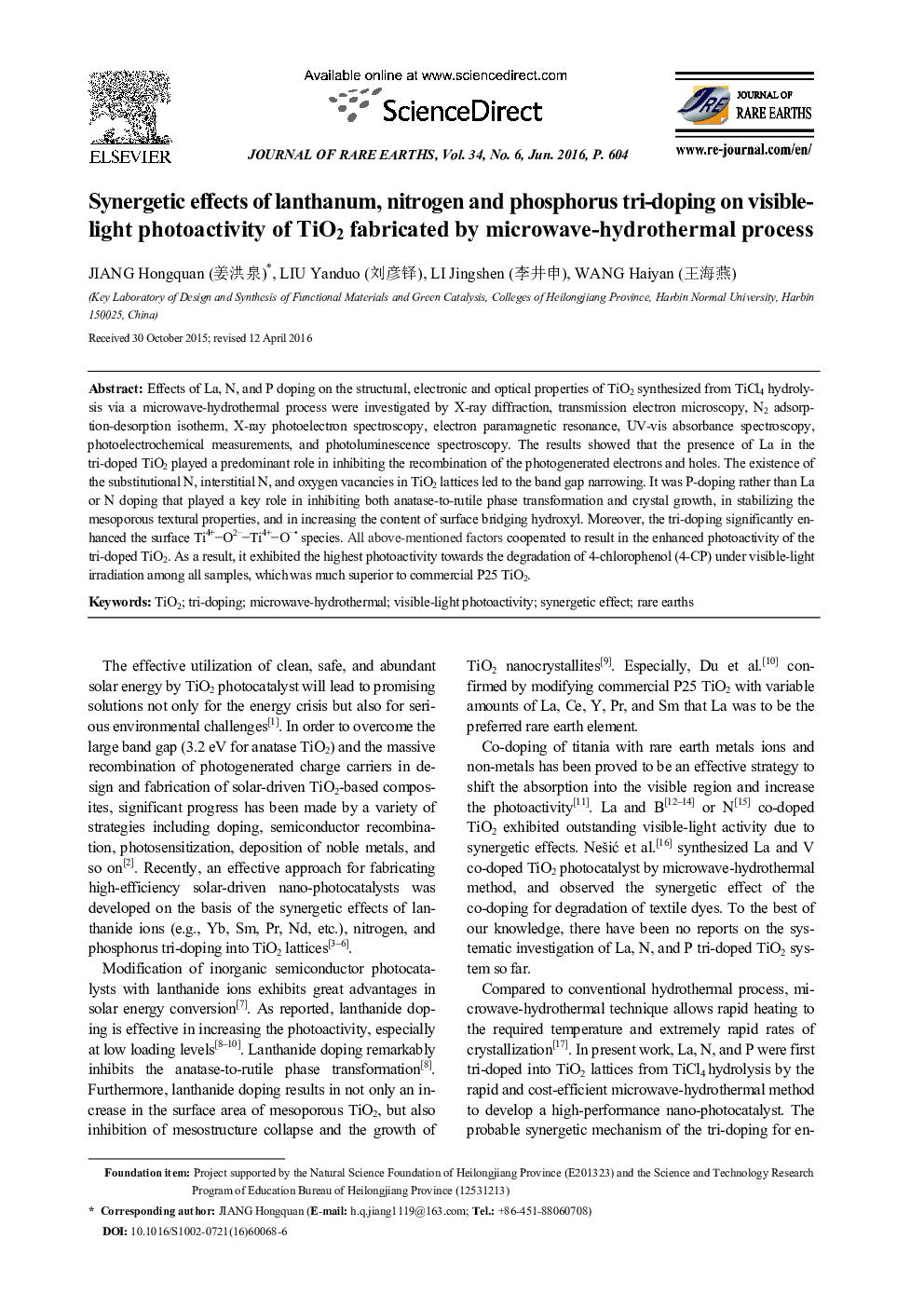| Article ID | Journal | Published Year | Pages | File Type |
|---|---|---|---|---|
| 1261553 | Journal of Rare Earths | 2016 | 10 Pages |
Effects of La, N, and P doping on the structural, electronic and optical properties of TiO2 synthesized from TiCl4 hydrolysis via a microwave-hydrothermal process were investigated by X-ray diffraction, transmission electron microscopy, N2 adsorption-desorption isotherm, X-ray photoelectron spectroscopy, electron paramagnetic resonance, UV-vis absorbance spectroscopy, photoelectrochemical measurements, and photoluminescence spectroscopy. The results showed that the presence of La in the tri-doped TiO2 played a predominant role in inhibiting the recombination of the photogenerated electrons and holes. The existence of the substitutional N, interstitial N, and oxygen vacancies in TiO2 lattices led to the band gap narrowing. It was P-doping rather than La or N doping that played a key role in inhibiting both anatase-to-rutile phase transformation and crystal growth, in stabilizing the mesoporous textural properties, and in increasing the content of surface bridging hydroxyl. Moreover, the tri-doping significantly enhanced the surface Ti4+–O2––Ti4+–O−• species. All above-mentioned factors cooperated to result in the enhanced photoactivity of the tri-doped TiO2. As a result, it exhibited the highest photoactivity towards the degradation of 4-chlorophenol (4-CP) under visible-light irradiation among all samples, which was much superior to commercial P25 TiO2.
Photocurrent action spectra of as-synthesized TO, LTO, NTO, PTO, and LNPTO under simulated sunlight irradiationFigure optionsDownload full-size imageDownload as PowerPoint slide
